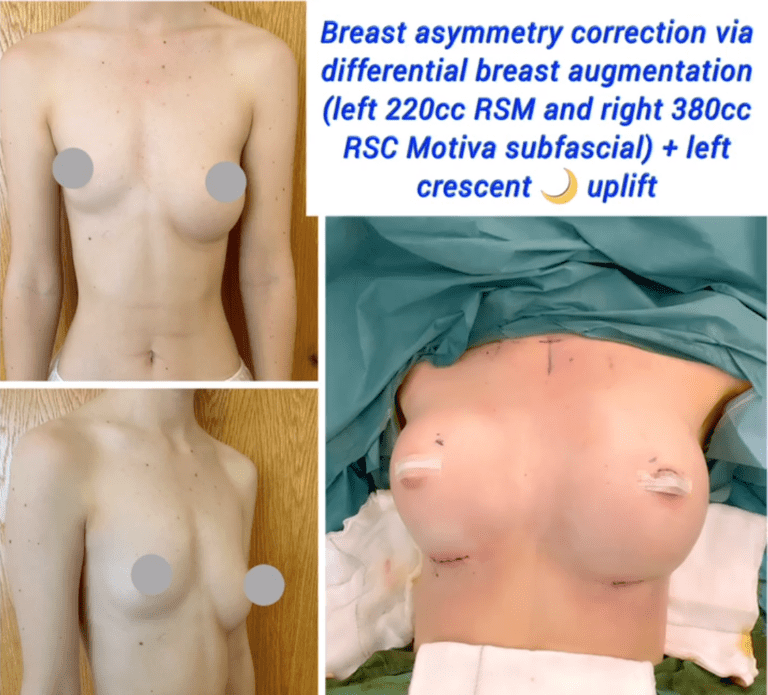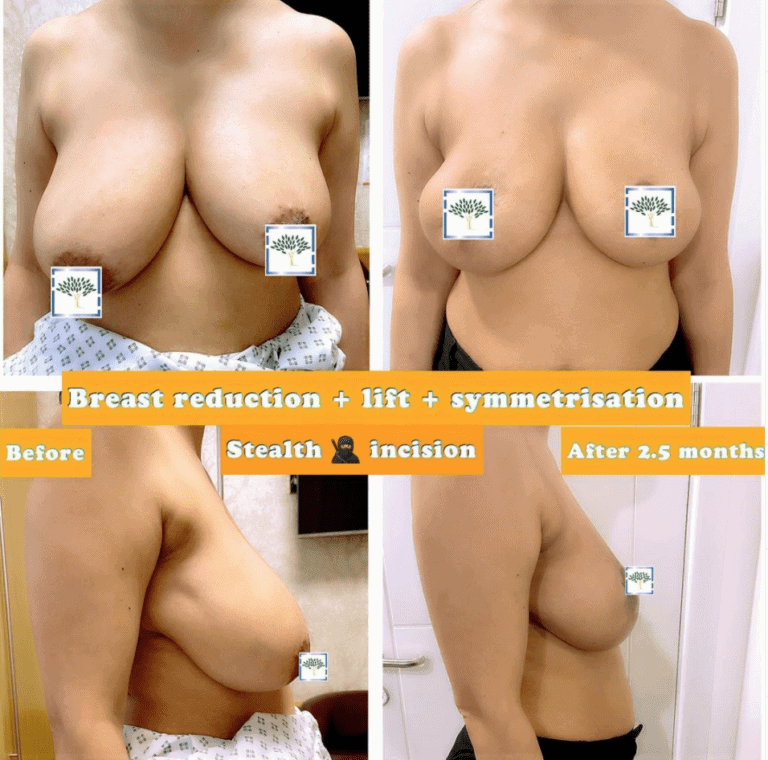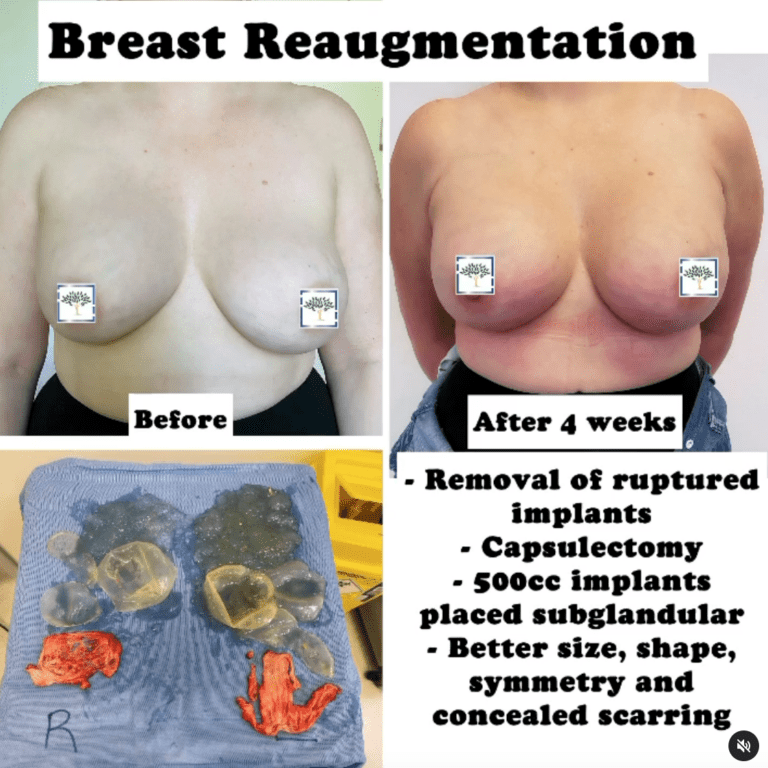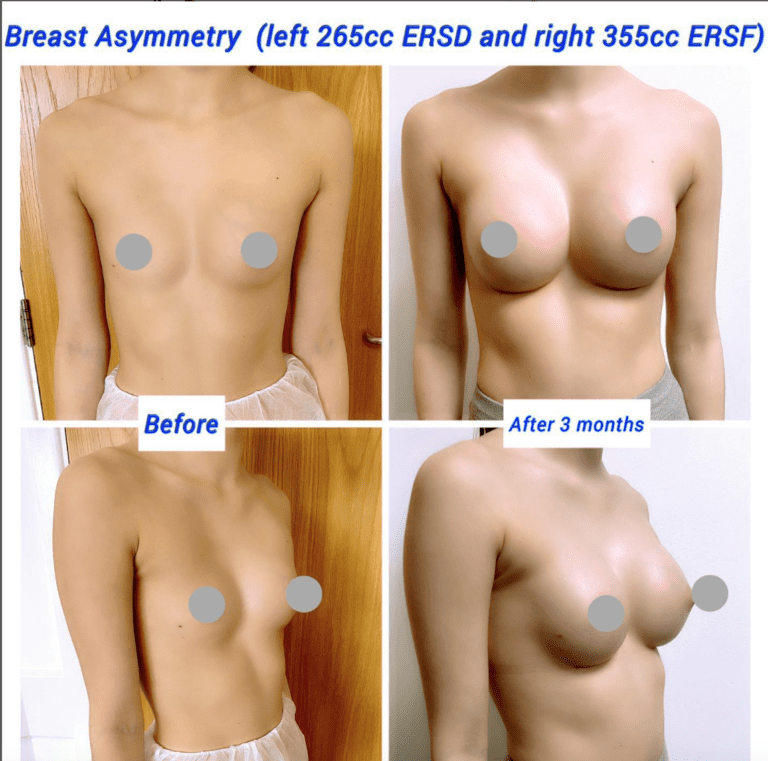Following breast reconstruction surgery, there may be some differences in the shape and size of your breasts. In this case, you may need additional breast surgery to get a symmetrical result.
What is Breast Asymmetry Correction?
After breast cancer treatment and reconstruction, it’s normal to expect some difference in the shape or size of the breasts. But, if the difference is too extreme or distressing or your clothes don’t fit, breast symmetrisation surgery is an option.
Sometimes, the difference in your breasts can be immediate, or it can develop over time. There is a range of options available to help restore balance, create a more symmetrical look, and leave you feeling more feminine.
Depending on your specific case, sometimes your doctor will be able to tell if the affected breast will be a different size. In this case, they may offer breast symmetrisation surgery at the same time as the cancer treatment. However, most patients get through treatment first and then address the issue of different breast size. The main reason for this is that sometimes the affected breast can change size during treatment.
If you find that you have one overly large or droopy breast, then you may want to discuss the possibility of symmetrisation surgery.

Breast Asymmetry: Quick Overview
- Surgery Time: up to 90 minutes
- Anaesthetic: General
- Hospital Stay: Day or 1 night
- Dressing and Garments: Dressings changed at 1 week and removed at 2 weeks, wear compression garment for 6 weeks
- Time Off Work: 1-2 weeks
- Exercise: 6 Weeks
- Mobile: 1 day
- Washing: At least 72 hours
- Sleeping Position: On back up to 2 weeks
- Full Recovery: up to 6-8 weeks

What Happens During Breast Asymmetry Correction?
Breast reconstructive surgery is a process that usually takes place in steps. After the correction or the reconstruction of the breast mould, a symmetrisation procedure is usually carried out. At this stage, your surgeon aims to make the reconstruction look more natural and make both breasts similar in size, appearance, and volume. The final part of the process is areola reconstruction.
Breast symmetrisation surgery is an umbrella term for several breast-related surgeries. After reconstructive surgery, you may have one breast larger or smaller than the other. You can also feel like one breast is much droopier than the other breast. Breast symmetrisation surgery can involve the below procedures. Your plastic surgeon will help guide you on the best decision for your situation so that your treatment is completely personalised to your body.
Breast Augmentation
Sometimes a treated breast can be quite a lot larger than your natural one. In this situation, your surgeon may suggest getting breast implants. This would involve an operation to place a breast implant in your other breast to achieve symmetry.
During the procedure, your surgeon will place the implants either behind the breast or behind the muscle the breasts sit on. The surgery itself takes about 90 minutes and is performed under general aesthetic.
Depending on the type of implant and the degree of enlargement, your surgeon may use varying surgical incisions. Incisions can be made in the creases under your breasts, in the armpit, or around the nipple. Your surgeon will discuss your incision options with you.
There are different techniques for the implants’ incision and placement. So, the area your surgeon will cut and place the breasts can change.

Breast Reduction
Other times, your natural or reconstructed breast may be smaller. Again, this can make finding clothes that fit difficult and create an asymmetrical appearance. In this case, a breast reduction may be suitable.
In breast reduction surgery, your nipple will be lifted into a new position. Then, extra skin and breast tissue are then cut away. The remaining skin and tissue are reshaped into smaller breasts. Drains are used during your breast reduction surgery to drain excess fluids. They will then be removed before you leave the hospital.
Nipple Reconstruction
The procedure takes 30 minutes to perform. It involves lifting and rotating skin in the centre of the breast and suturing it into its new position. Nipple reconstruction aims to create a new nipple using your body’s own tissue. Usually, nipple reconstruction is performed after breast reconstructive surgery once your new breasts are settled into place. If your nipple has been removed and you can’t create a nipple during reconstructive surgery, you can have a nipple made during a later procedure.
In some cases, patients prefer to avoid surgery and have a nipple tattoo. This creates the illusion of a nipple without any nipple reconstruction surgery required.
Lipofilling
Lipofilling or lipomodelling can improve the contours of the breast after reconstruction. You can inject fat into the required area or remove fat from the reconstructed breast to create a softer, smaller appearance, so both breasts match.
Lipofilling works by removing unwanted fat from an area of the body like the thighs, buttocks, or abdomen using liposuction. The necessary fat is obtained through small 3-5mm incisions, normally from the thighs or abdomen. Fat cells are then harvested and separated from body fluid. The fat is then processed by centrifuging, rinsing, or filtering. Pure fatty tissue is then injected into the body.

What Happens During Your Breast Asymmetry Correction Consultation?
You will need to be fully healed from your reconstruction surgery before going ahead with this procedure. During your consultation, you will discuss your expectations, the benefits of the treatment, and any risks and side effects. Your surgeon will examine your breast and determine whether surgery is possible.
How to Prepare for Your Breast Asymmetry Surgery
The amount of time you need off work will depend on your surgery. You should book time off work as needed and arrange for help with shopping, housework, and childcare. The best way to prepare for surgery is to follow a healthy diet, stay hydrated, and prepare for the recovery period.
What is the Recovery Timeline for Breast Breast Asymmetry Correction?
The recovery timeline differs depending on your treatment. It can range from weeks to months. It can take up to 10 days to recover from a nipple reconstruction, while you would need 4 to 6 weeks to recover from breast augmentation. Your recovery process will depend on your procedures or combination of procedures.
For most patients, you will be discharged with a support bra that you will need to wear for 6 weeks. These compression garments help to reduce swelling and fluid build-up as well as make you more comfortable. Your surgeon will see you regularly after your procedure to check on your wound healing. Most patients are advised to avoid lifting for 6 weeks. You may need to avoid sexual activities for 3-6 weeks.
What are the Benefits of Breast Symmetrisation?
The main benefit of these procedures is that they can restore symmetrical breasts following cancer and reconstructive treatment. This helps to boost confidence, improve self-esteem, and allows clothes to fit you better.
Before and After Breast Asymmetry Surgery at the Harley Clinic

What are the Potential Risks and Side Effects of Breast Symmetrisation?
It’s important to know that all these surgeries come with potential risks and side effects, including but not limited to:
- Infection
- Bleeding
- Hematoma
- Anaesthesia risks
- Skin and or fat/necrosis
- Fluid accumulation
- Pain
- Swelling
- Poor wound healing
- Poor scarring
- Nerve injury
- Contour irregularity
- Seroma
- Over/under correction
- Asymmetry
- Damage to other structures
- DVT
- PE
- Chest infection
- Need for further surgery
- Unhappiness with size
- Extrusion
- Weight of the implant and gravity could mean that there’s a need for a breast lift in the future
There is no one-size-fits-all approach to breast symmetrisation. It completely depends on the patient’s unique circumstances. Overall, patients tend to be very satisfied with their new breast appearance. Creating a natural and symmetrical look is the main objective of this procedure.
To book a consultation today, please call 0203 582 4947 or email [email protected].
Further Reading:
- Breast Reduction Surgery: Procedure & Recovery Time
- Breast Augmentation: Implants vs Fat Transfer
- 6 Benefits of Breast Lift Surgery
- 7 Questions to Ask Before Your Breast Augmentation
- Can You Breastfeed After Breast Surgeries?
- How to Prepare for Breast Augmentation Surgery
- What You Need to Know About Breast Screening with Breast Implants
- How Can You Treat Capsular Contracture?










